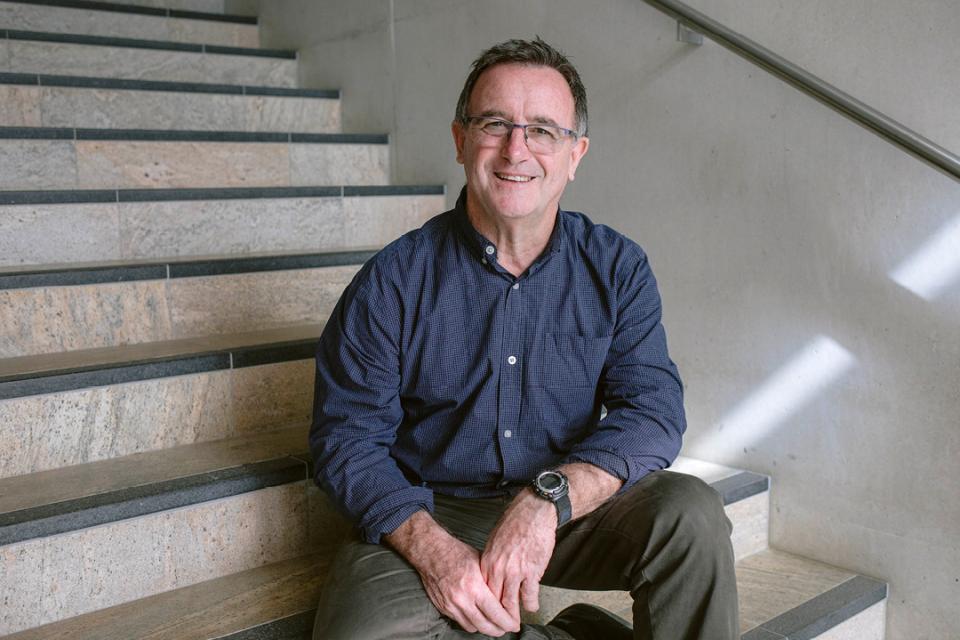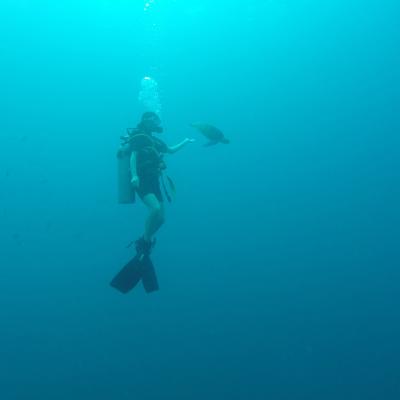How do you take a passion for the environment and turn it into a pragmatic approach that can accomplish real change in the world?
The dilemmas of marine conservation
Compiling enough data to challenge the way we treat our surrounding environments is not just a battle fought on philosophical, spatial and temporal grounds. It’s also an assignment that requires researchers to think about the technological and financial requirements needed to accurately protect and preserve nature in its many forms.
That’s an equation Associate Professor Ron Johnstone of UQ’s School of the Environment is all too aware of.
“When some national environmental monitoring budgets are $150,000 per annum and the cost of a single monitoring buoy is $120,000, you suddenly appreciate the gravity of choices being made,” says Ron.
“This is an actual example of a situation I have worked with in Tanzania and Mozambique some years ago. So, do you go and buy a buoy for $120,000 and short-change your other efforts, or do you ignore the monitoring and simply plug ahead with what you think you know?"
“That puts environmental scientists in a really awkward position. It’s a moral dilemma, because you need that monitoring data to verify a situation, your current approach, or maybe the results of a previous approach, but the data can only be collected by making huge sacrifices elsewhere.”

How can we conserve marine life on a budget?
It’s this dilemma that underpins Ron’s passion for the SEMAT (Smart Environmental Monitoring and Analysis Technologies) project.
The main goals of SEMAT are to:
- develop affordable wireless technologies that require minimal technical knowledge
- utilise intelligent sensors
- provide analysis that is close to real-time.
“Marine environments are particularly hostile and extremely difficult for deploying sensitive measurement systems,” says Ron.
“Consequently, marine environments are where we historically lack the greatest knowledge and are where we need to focus. Expense is typically the most significant limiting factor, although technical complexity and the level of skill required for deployment and servicing run a close second."
“SEMAT is a network that uses a commodity-based approach for selecting technologies most appropriate to the particular domain or field being analysed. The result is an inexpensive and flexible system ideal for short-term deployments in aquatic environments.”
One result of being able to operate an increased number of sensors is that the data collected is not only more detailed, but it’s also far more diversified than would otherwise be possible.
Instead of only focusing on one or two regions where the environment may be under duress, scientists can begin to look at broader regions that may otherwise have been ignored.
“The Great Barrier Reef, for example, is just one part of the bigger picture, and deservedly it receives a lot of the focus,” says Ron.
“But there’s another 1.3 billion cubic kilometres of water out there. UQ has been able to establish a monitoring network for Moreton Bay, for example. We then have a chain of smaller devices that stretch out to estuarine and catchment areas to better collect pollutant and light levels, temperature and other data.
“There are also several offshoot projects. For example, we had an honours student specifically monitoring the Logan Estuary. We are giving people a bigger picture and greater data to assess the fragility of often poorly understood ecosystems."
Own the unknowns of environmental studies at UQ.






